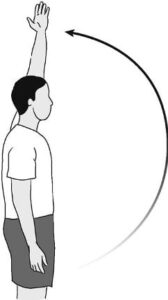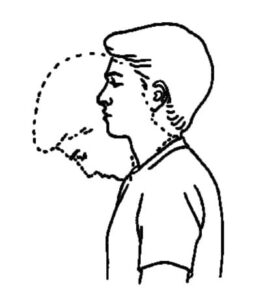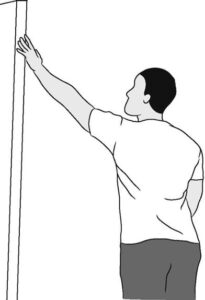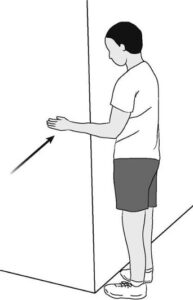After shoulder surgery, weeks of Physical Therapy (PT) can feel daunting. That being said, PT is still important to the healing process, and hurrying it will not do you any favors. Here are 8 Easy Exercises you can do after Shoulder Surgery, provided by a guest blogger; Daniel Demoss. Daniel has a master’s degree in physical therapy from NYU Steinhardt and is a personal trainer from Denver, CO.

There are many surgical options for treating Glenohumeral Osteoarthritis, also referred to as Shoulder Arthritis. The more traditional total shoulder replacements are extremely invasive and place a large metal rod down the shaft of your humerus. Nowadays, there are innovative, minimally invasive, anatomic shoulder implants that are proven to allow patients increased range of motion and no activity restrictions following recovery. The Arthrosurface stemless, anatomic, total shoulder arthroplasty systems recreate the native shape of your shoulder joint and can allow for a faster recovery. That being said, correct physical therapy is still important to the healing process, and hurrying it isn’t going to do you any favors.
A few simple exercises, executed correctly, can go a long way. The following exercises can help you regain strength and mobility.
Make sure you attempt them only after receiving the green light from your doctor to start exercising again.
8 Easy Exercises You Can Do After Shoulder Surgery
Shoulder Forward Elevation

Source: https://orthoinfo.aaos.org/en/recovery/shoulder-surgery-exercise-guide/
How to do it:
- Stand up with your spine straight.
- Your arms should be positioned with the thumb facing forward.
- Lift your arms at a 90 degrees angle (parallel to the floor). Focus on hinging from the shoulder as opposed to raising the arm using the shoulder blade.
- After 10 repetitions to 90 degrees, try to lift the arm overhead.
Pendulum, Circular

Source:https://orthoinfo.aaos.org/en/recovery/shoulder-surgery-exercise-guide/
How to do it:
- Bend over at the waist. Your torso should be almost parallel to the floor.
- Let your arm hang down.
- Swing the arm forward and backward in a circular movement, using your body to initiate the movement.
Neck Flexion

Source: https://www.brain-spine.com/cervical_activities/six_movements_of_the_neck.html
Shoulder issues can cause imbalances for the muscles in the neck, so it’s important to stretch them too. One thing you should be very mindful of is to move slowly! The neck is not an area where you want to push beyond your comfort zone.
How to do it:
- Stand or sit with your spine straight, arms by your sides, drawing your shoulder blades back and down.
- Slowly start to take your chin to your chest.
- Hold for about 15-30 seconds.
- Repeat 2-3 times.
- Once you are done with these repetitions, start to slowly take your left ear to your left shoulder. Again hold, for a few seconds and repeat 2-3 times.
- Switch sides, to take your right ear to your right shoulder.
Supported Shoulder Rotation

Source: https://orthoinfo.aaos.org/en/recovery/shoulder-surgery-exercise-guide/
How to do it:
- Sit with your spine straight, arms by your side.
- Your shoulder blades should be down and together.
- Bend your arm at the elbow, keeping the elbow in place by your side.
- For support, your forearm can be placed on a table.
- Move the forearm back and forth, then right and left.
- Repeat 2-4 times.
Walk-up Exercise

Source: https://orthoinfo.aaos.org/en/recovery/shoulder-surgery-exercise-guide/
How to do it:
- Stand next to a wall.
- With your elbow straight, walk your arm up the wall as far as possible.
- When you reach your maximum, hold for about 10-20 seconds.
- Repeat 2-4 times.
Shoulder External Rotation

Source: https://orthoinfo.aaos.org/en/recovery/shoulder-surgery-exercise-guide/
How to do it:
- Stand against a wall on the side you want to work.
- Keep the side you want to work against the wall or bench.
- Bend the elbow at 90 degrees.
- Push the back of your hand into the bench or the wall.
- Hold for 10-20 seconds and repeat 2-4 times.
Shoulder Internal Rotation

Source: https://orthoinfo.aaos.org/en/recovery/shoulder-surgery-exercise-guide/
How to do it:
- Stand at the corner of a wall.
- The arm you want to work on should be placed against the wall around the corner.
- Bend your elbow at 90 degrees.
- Push the palm of your hand into the wall.
- Hold for 10-20 seconds and repeat 2-4 times.
Flexion/extension

Source: https://physicaltherapyweb.com/hyper-extension-internal-rotation-heri-test/
How to do it:
For flexion:
- Stand or sit with your spine straight.
- Raise your arm out to the side. Try not to shrug the shoulder. Keep the elbow straight.
For extension:
- Stand with your back against a wall.
- With the elbow straight, push your palm against the wall.
- Repeat on each side 2-4 times.
After-Care Tips For Shoulder Surgery
After shoulder surgery, you need to check with a doctor before attempting any exercises. The ones presented above should be safe for most people, but there are certain injuries for which they might do more harm than good.
Here’s how to create a complete shoulder rehabilitation workout.
Step 1: Warm-up
As in any workout routine, don’t start without first warming up. That can be a light cardio session like a stationary bike or an elliptical. If you have none of these at home, you can always opt for a brisk walk or even some light aerobics that can be done indoors.
Step 2: Do your shoulder exercises
Now that you’ve warmed-up, it’s time to do the exercises. Pay close attention to how you’re feeling the entire time. If any pain comes up, stop immediately. Rest, and only consider trying another exercise if no more pain is present.
If 2-4 repetitions of each exercise feel too many, do just 1 or 2. You also don’t have to do all the exercises at once, even if you have the green light for all of them.
Building strength happens gradually. When 1-2 repetitions of 3 exercises feel like nothing, you’ll know you can add another exercise or an extra repetition.
Step 3: Cooldown/stretch
- Since you didn’t do any heavy exercises it might feel like this step is pointless. It’s not! But it does depend on how many exercises you did and how you’re feeling.
- If you are already well on your way to recovering your strength and flexibility, you might have gone the extra mile during the cardio warm-up and you may have done all the exercises at maximum capacity.
- So take time to gently stop, stretch your legs as they did work during the cardio exercise. Also, stretch the good shoulder to reduce imbalances.
- And if you are unsure what exercises you can do after your shoulder surgery, don’t hesitate to contact a medical professional to get answers to all your questions so that you can workout safely.
About the Author
Daniel DeMoss is a personal trainer based in Denver (Matrix Gym) and a true fitness nerd. When he’s not busy training clients or working out at his home gym, you‚Äôll probably find him skiing, cycling or hiking with his dog Rufus.
For more tips about the best home workouts and equipment, check out Daniel Demoss’ website the Dumbbells Review.




